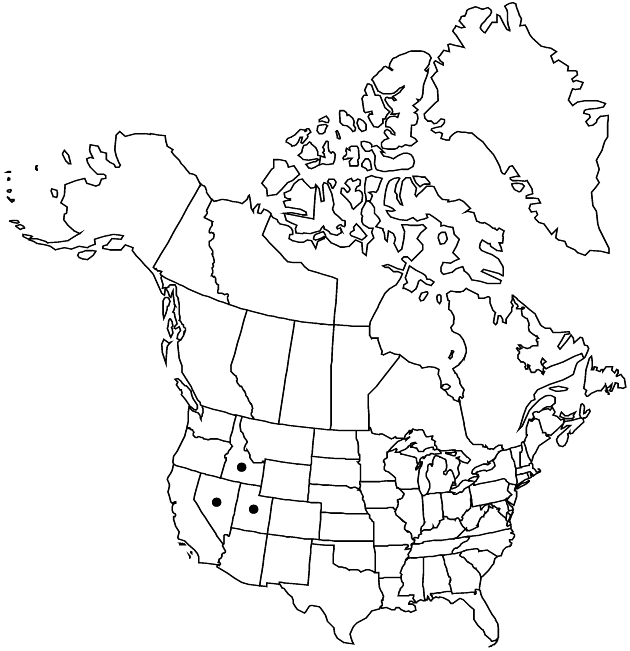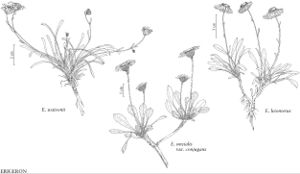Erigeron watsonii
Brittonia 6: 207. 1947.
Perennials, 3–10 cm; taprooted, caudices sometimes multicipital, branches relatively short and thick, sometimes relatively long and slender. Stems ascending to decumbent-ascending, glabrous, eglandular. Leaves mostly basal (persistent); blades narrowly oblanceolate to spatulate (often folding), 15–60 × 1–5 mm, cauline abruptly reduced distally, margins entire, abaxial faces glabrous, adaxial sparsely strigose, eglandular. Heads 1 (–2). Involucres 4–7 × 5–10 mm. Phyllaries in 2–3 series (inner usually with purple margins), glabrous, minutely glandular. Ray-florets 13–25, corollas white to pink, 4–6 mm, laminae not coiling or reflexing, spreading. Disc corollas 2.8–4 mm. Cypselae 2–3.2 mm, 2-nerved, faces sparsely strigose; pappi: outer of setae, inner of 25–35 (straw-colored, dull) bristles.
Phenology: Flowering Jul–Sep.
Habitat: Gravelly or rocky slopes, ridge tops, talus, soil pockets, sagebrush, limber pine-fir
Elevation: 2400–3300 m
Distribution

Idaho, Nev., Utah.
Discussion
Selected References
None.
Lower Taxa
"thick" is not a number.
